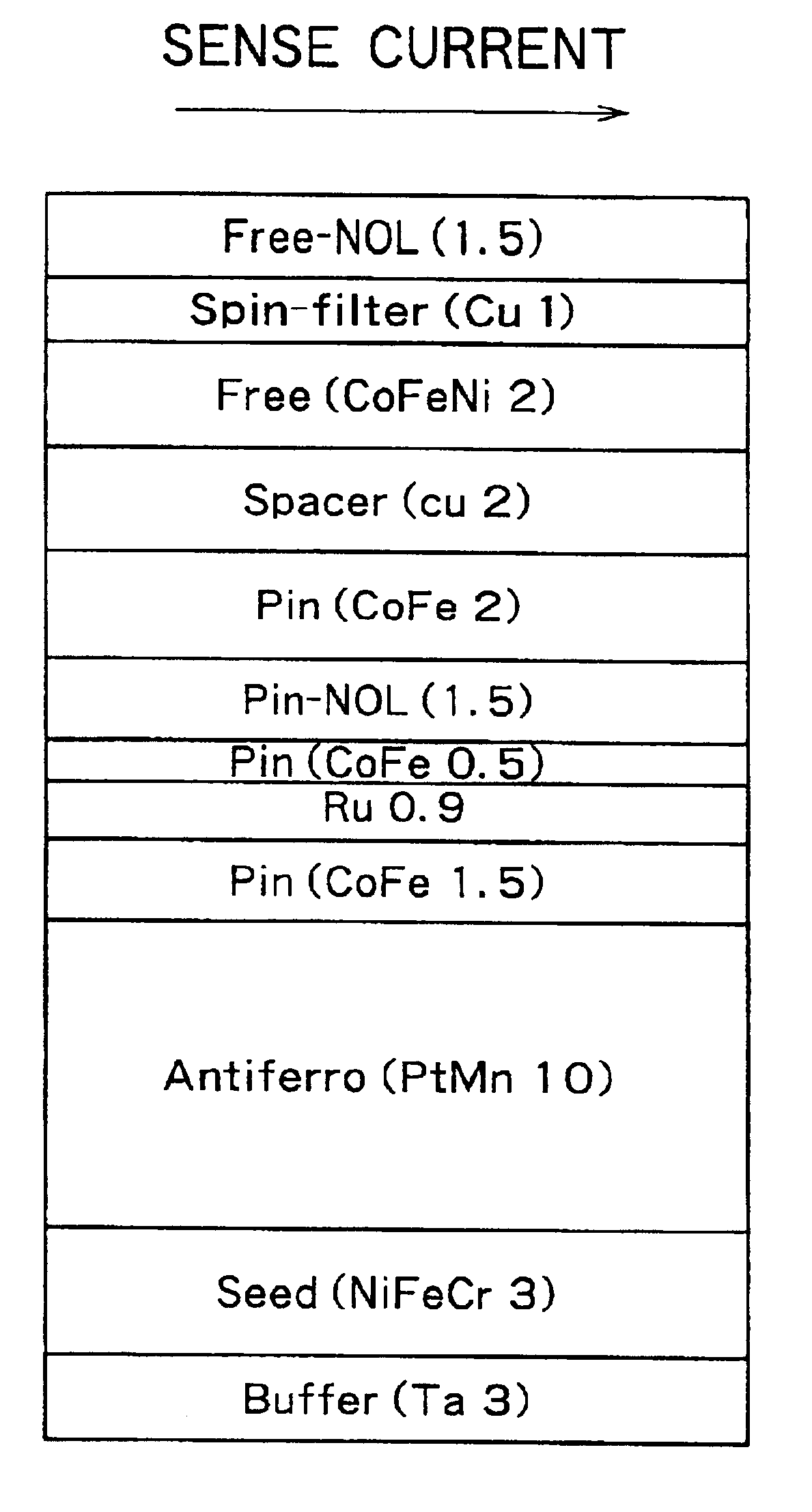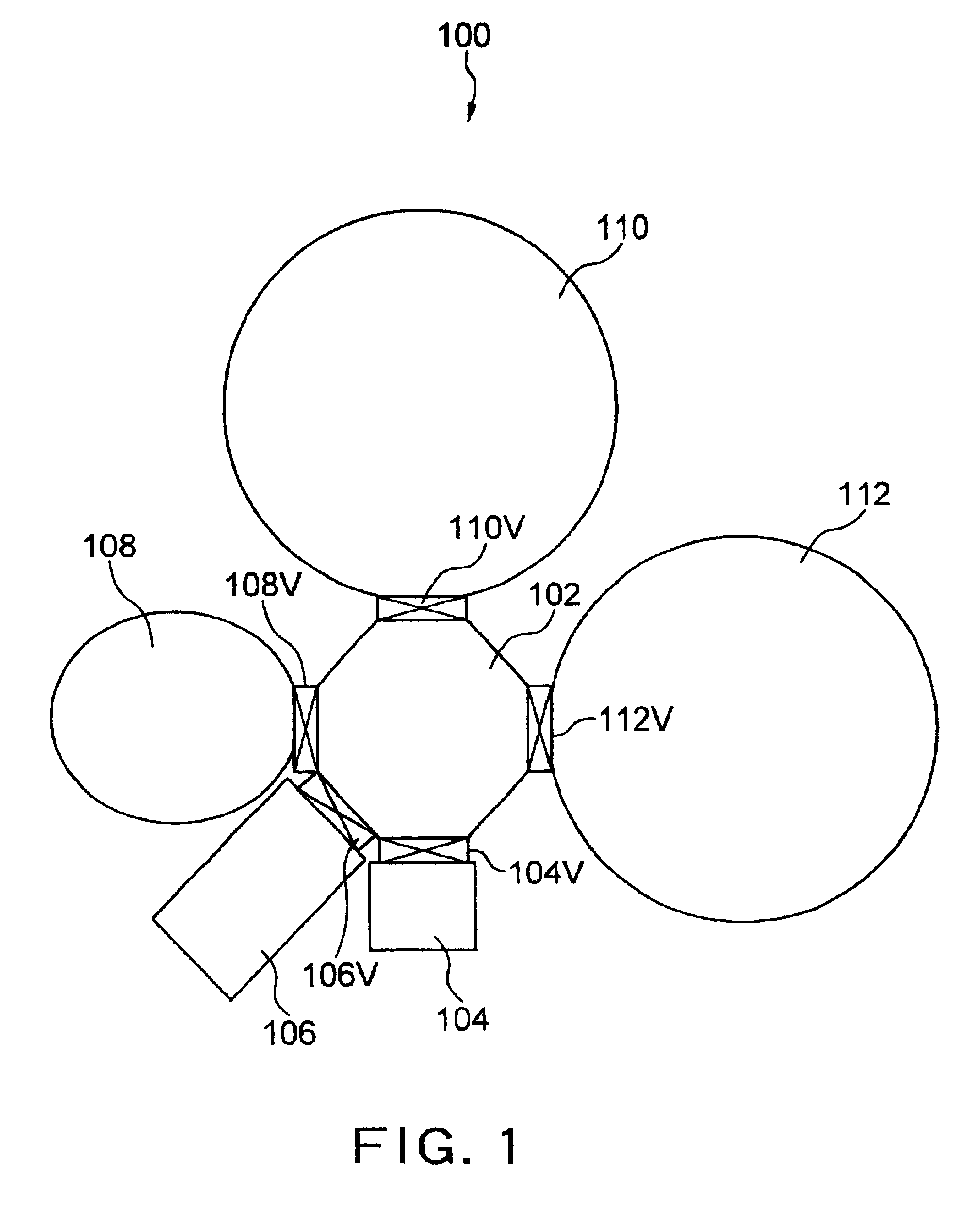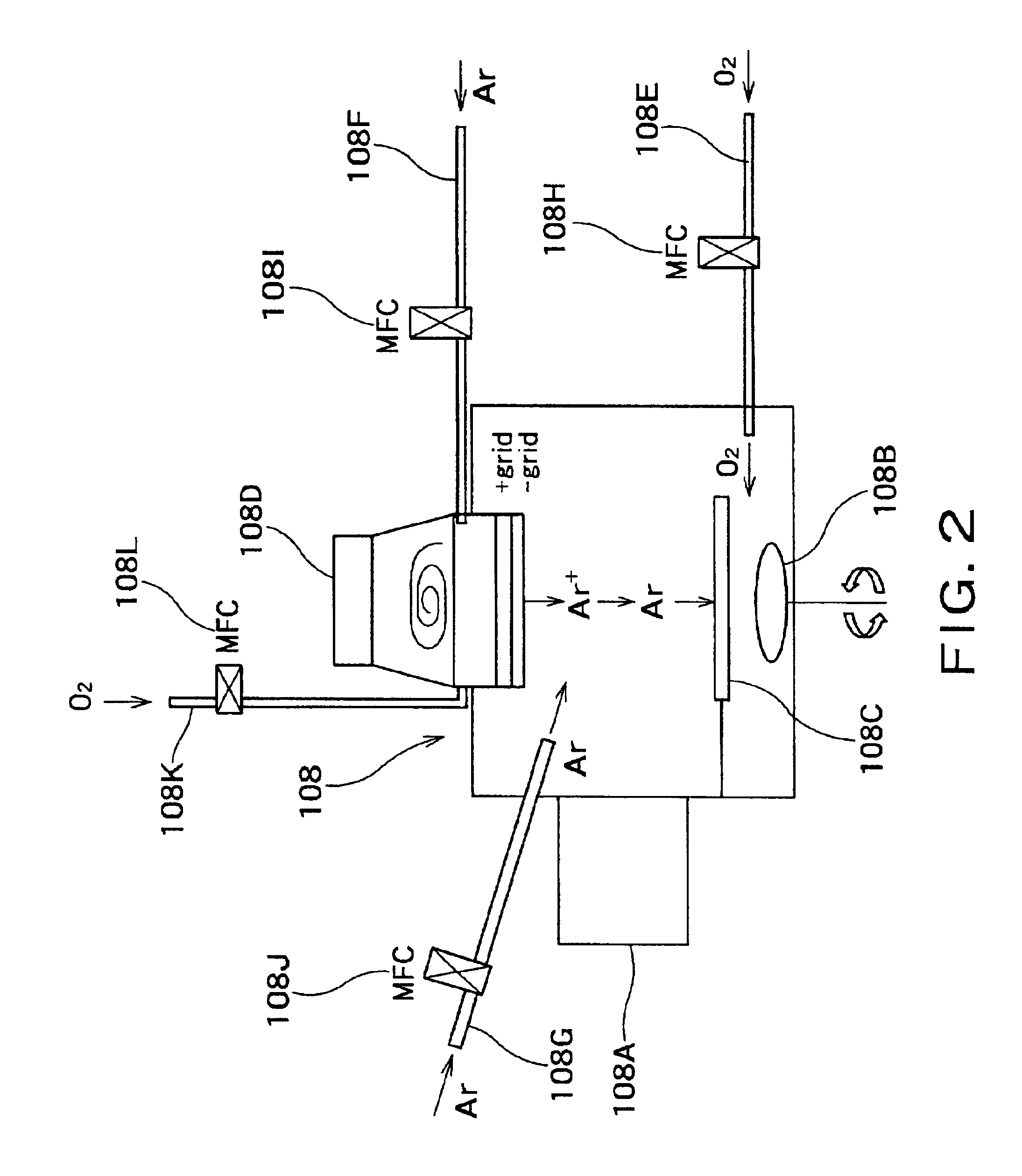Magnetoresistance effect element
a technology of magnetic coupling and effect element, applied in the field of magnetic resistance effect element, can solve the problems of weakened magnetic coupling via the nol, difficult to insert a nol into a pinned layer to maintain a high specular rate, and not so good specular ra
- Summary
- Abstract
- Description
- Claims
- Application Information
AI Technical Summary
Benefits of technology
Problems solved by technology
Method used
Image
Examples
example 1
[0294]Examples of the eighth embodiment of the present invention will be described below.
[0295]An SV film having the following construction was prepared by the sputtering method, and MR characteristics were compared.
[0296]Ta 3 nm (Underlying Layer) / NiFeCr 3 nm (Underlying Layer / PtMn 10 nm (Antiferromagnetic Layer) / CoFe 1.5 nm (Pinned layer) / Ru 0.9 nm (Pinned layer) / CoFe 0.5 nm (Pinned layer) / Fe Oxide 1.5 nm (Electron Reflective Layer) / CoFe 2 nm (Pinned layer) / Cu 2 nm (Non-magnetic Intermediate Layer) / CoFe 2 nm (Free Layer) / Cu 1 nm (High Conductive Layer) / X (Electron Reflective Layer) / Amorphous Alumina 100 nm
[0297]In this SV film, an oxidizing process was carried out by various oxidizing methods to form an Fe oxide or Cr oxide having a thickness of 1 nm as the electron reflective layer X to observe the kind and abundance ratio of the product by the extended X-ray absorption fine structure (EXAFS) and crystalline properties by the cross-section TEM. The results thereof are shown below...
PUM
 Login to View More
Login to View More Abstract
Description
Claims
Application Information
 Login to View More
Login to View More - R&D
- Intellectual Property
- Life Sciences
- Materials
- Tech Scout
- Unparalleled Data Quality
- Higher Quality Content
- 60% Fewer Hallucinations
Browse by: Latest US Patents, China's latest patents, Technical Efficacy Thesaurus, Application Domain, Technology Topic, Popular Technical Reports.
© 2025 PatSnap. All rights reserved.Legal|Privacy policy|Modern Slavery Act Transparency Statement|Sitemap|About US| Contact US: help@patsnap.com



